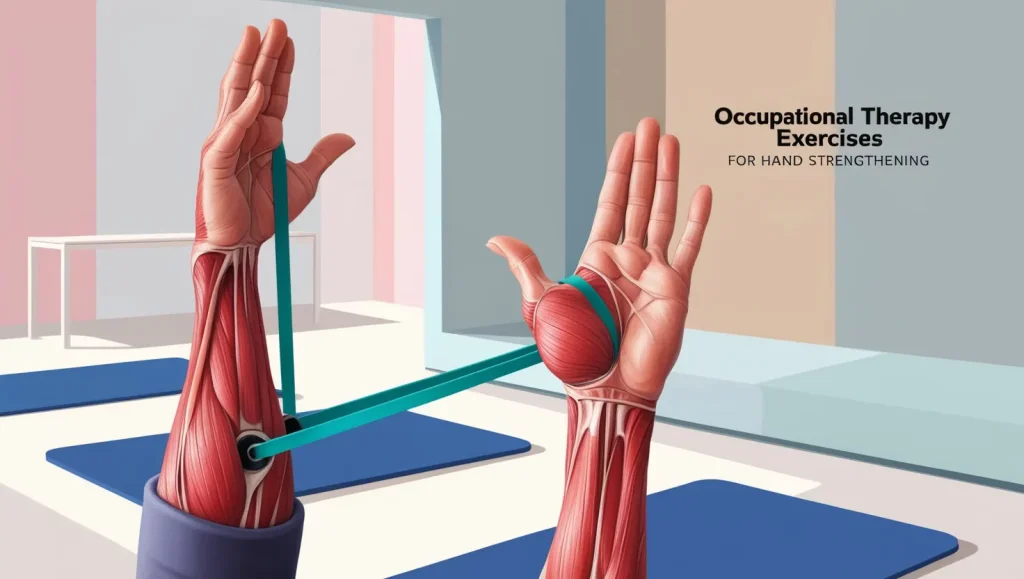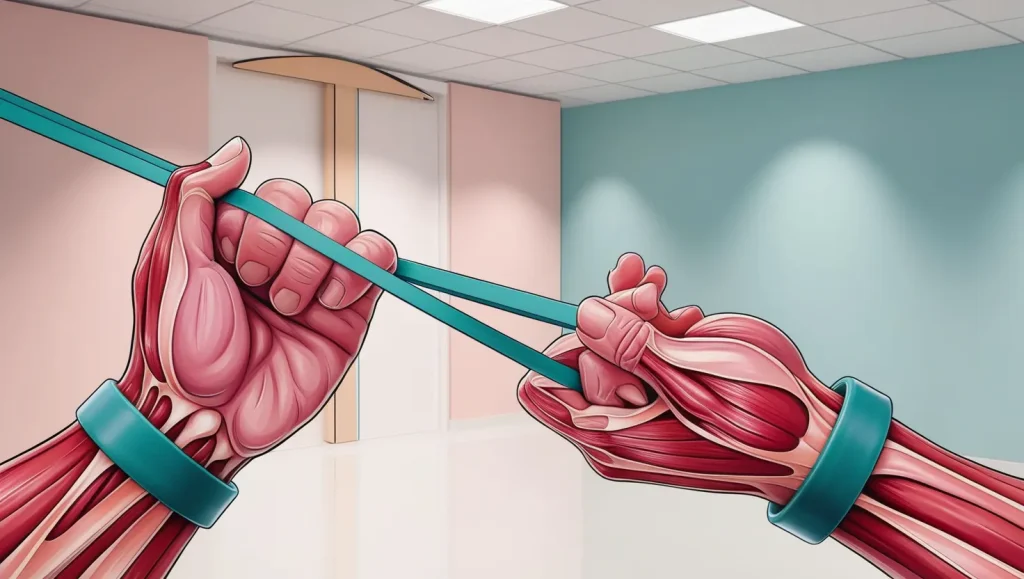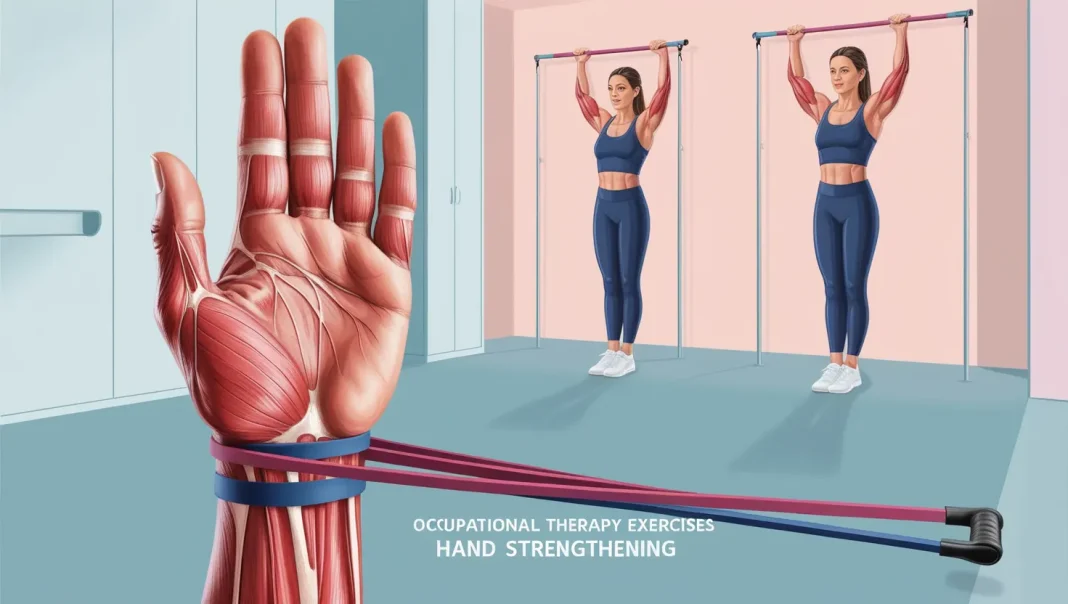Introduction to Hand Strengthening Through Occupational Therapy
Maintaining strong, functional hands isn’t just about gripping a jar or typing on a keyboard. Our hands are essential for independence and quality of life, and occupational therapy exercises are a fantastic way to strengthen them.
Why Hand Strengthening is Important
The Role of Hand Strength in Everyday Activities
Imagine trying to open a bottle, write a note, or play a musical instrument with weak hands. Hand strength is crucial for performing daily tasks, and building it up helps enhance your independence and productivity.
Who Can Benefit from Hand Strengthening Exercises?
Whether you’re recovering from an injury, managing a condition like arthritis, or just wanting to improve your overall hand health, these exercises are for everyone. Kids, adults, and seniors can all gain from stronger hands.

Foundations of Occupational Therapy for Hand Health
What is Occupational Therapy?
Occupational therapy is a type of healthcare focused on helping individuals regain or improve their ability to perform daily tasks. For hand strengthening, it focuses on tailored exercises that build strength, dexterity, and mobility.
How It Enhances Hand Functionality
These exercises don’t just strengthen muscles; they improve coordination and flexibility. Over time, they can restore lost functionality and help prevent future problems.
Key Benefits of Hand Strengthening Exercises
Improved Dexterity and Fine Motor Skills
Ever fumbled with buttons or zippers? Strengthening exercises help you gain better control over your hand movements, making intricate tasks easier.
Increased Grip Strength
A stronger grip isn’t just for athletes or climbers—it’s essential for carrying groceries, lifting objects, and even shaking hands confidently.
Faster Recovery from Injuries
Regular hand exercises promote blood circulation and tissue repair, speeding up recovery from sprains, fractures, or surgery.
Top Occupational Therapy Exercises for Hand Strengthening
Squeezing Stress Balls
Grab a stress ball and squeeze it as hard as you can without pain. Hold for five seconds, then release. This simple exercise targets the muscles in your palms and fingers.
Pinching Therapy Putty
Therapy putty is a fun and effective tool. Pinch, stretch, and knead it to work on your grip and fine motor skills.
Finger Lifts
Place your hand flat on a table and lift one finger at a time. This strengthens individual fingers and improves coordination.
Thumb Opposition Movements
Touch your thumb to each fingertip on the same hand, forming a circle. Repeat this exercise to enhance thumb mobility and strength.
Wrist Flexion and Extension
With your arm resting on a table, let your hand dangle off the edge. Slowly move your wrist up and down. It’s great for strengthening wrist muscles and tendons.

Using Everyday Objects for Hand Therapy
Household Items for Strength Training
Use items like rubber bands, sponges, or small weights. For example, squeezing a sponge while doing dishes is a great impromptu workout for your hands.
DIY Hand Therapy Tools
Got rice or beans at home? Fill a bowl and practice gripping or digging your fingers into it. It’s a simple, cost-effective way to work on hand strength.
Tips for Maximizing Results
Consistency is Key
Like any workout, regularity is essential. Dedicate at least 10-15 minutes daily to see noticeable improvements.
Combining Exercises with Stretching
Stretching keeps your hands flexible, reducing stiffness and improving the effectiveness of strengthening exercises.
Incorporating Fun into Therapy
Turn therapy into play! Try games like squeezing toys or using interactive gadgets to make hand strengthening enjoyable.
Precautions and Common Mistakes
Avoiding Overexertion
Pushing too hard can cause strain or injury. Listen to your body and take breaks when needed.
Maintaining Proper Form
Poor technique can reduce the effectiveness of exercises and lead to discomfort. Follow instructions carefully or consult a professional.
When to Seek Professional Help
Recognizing the Need for Guidance
If pain persists or you’re unsure about proper techniques, don’t hesitate to seek help from an
Occupational therapist.
Finding a Qualified Occupational Therapist
Look for certified professionals with experience in hand therapy. They can create a personalized plan that meets your specific needs.
Conclusion: Small Steps, Big Gains
Discover effective occupational therapy exercises for hand strengthening! Boost grip strength, improve dexterity, and recover faster with simple, practical exercises for all ages. Strengthening your hands might seem like a small step, but it has a massive impact on your daily life. By incorporating these occupational therapy exercises, you’ll build stronger, more capable hands that serve you well for years to come.
FAQs
- How often should I do hand strengthening exercises? * Aim for daily practice, dedicating 10-15 minutes each day. Consistency is crucial for long-term benefits.
- Can children benefit from these exercises? * Absolutely! These exercises can help kids develop better coordination, especially if they struggle with fine motor skills.
- Are there any risks involved? * Overexertion and poor form can cause strain. Always start gently and consult a professional if needed.
- Can these exercises help with arthritis? * Yes, they can improve joint flexibility and reduce stiffness. However, consult your doctor before starting any new exercise routine.
- How long does it take to see results? * Results vary, but with regular practice, you may notice improvements within a few weeks. Stay consistent and patient!



























